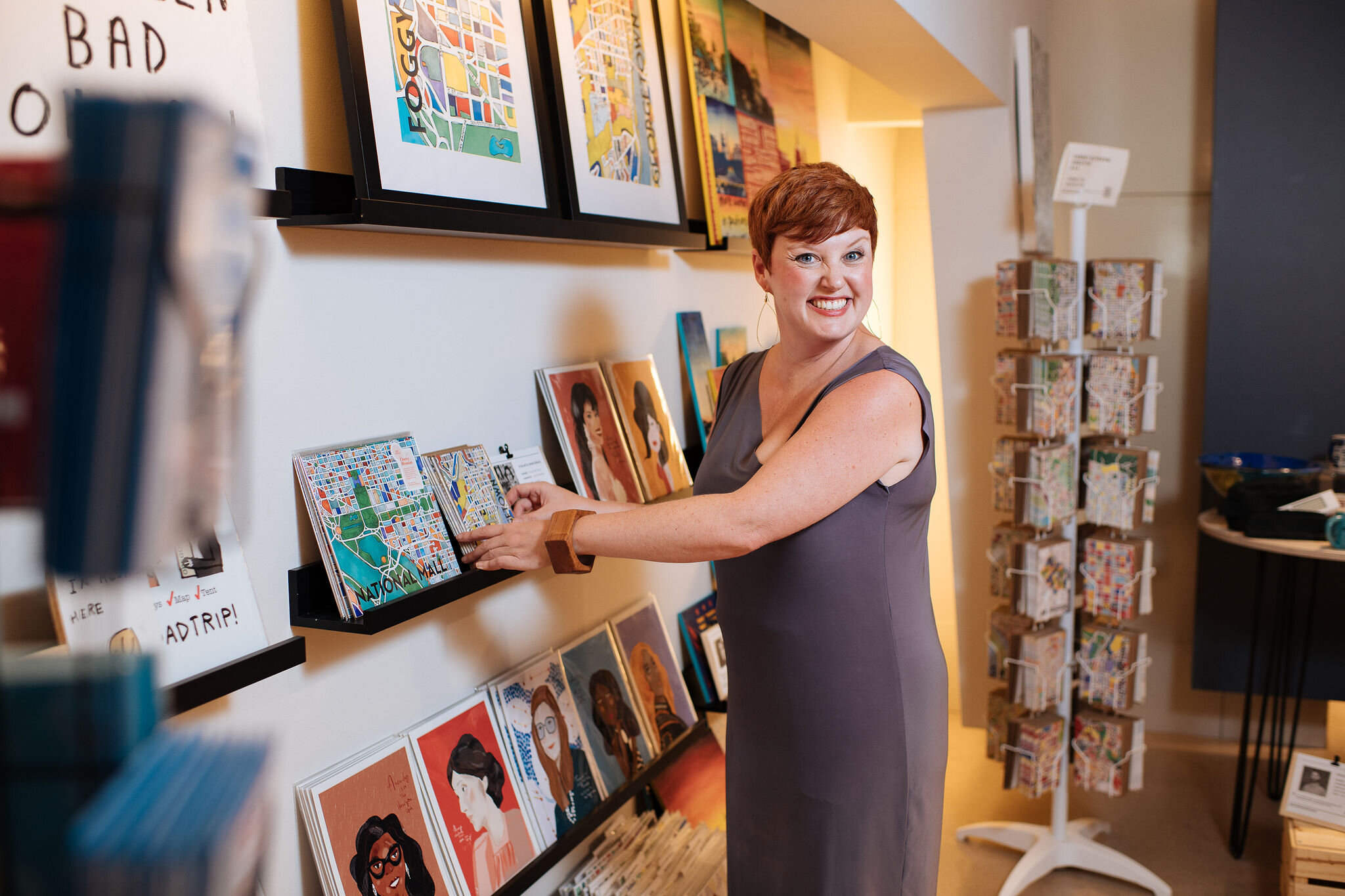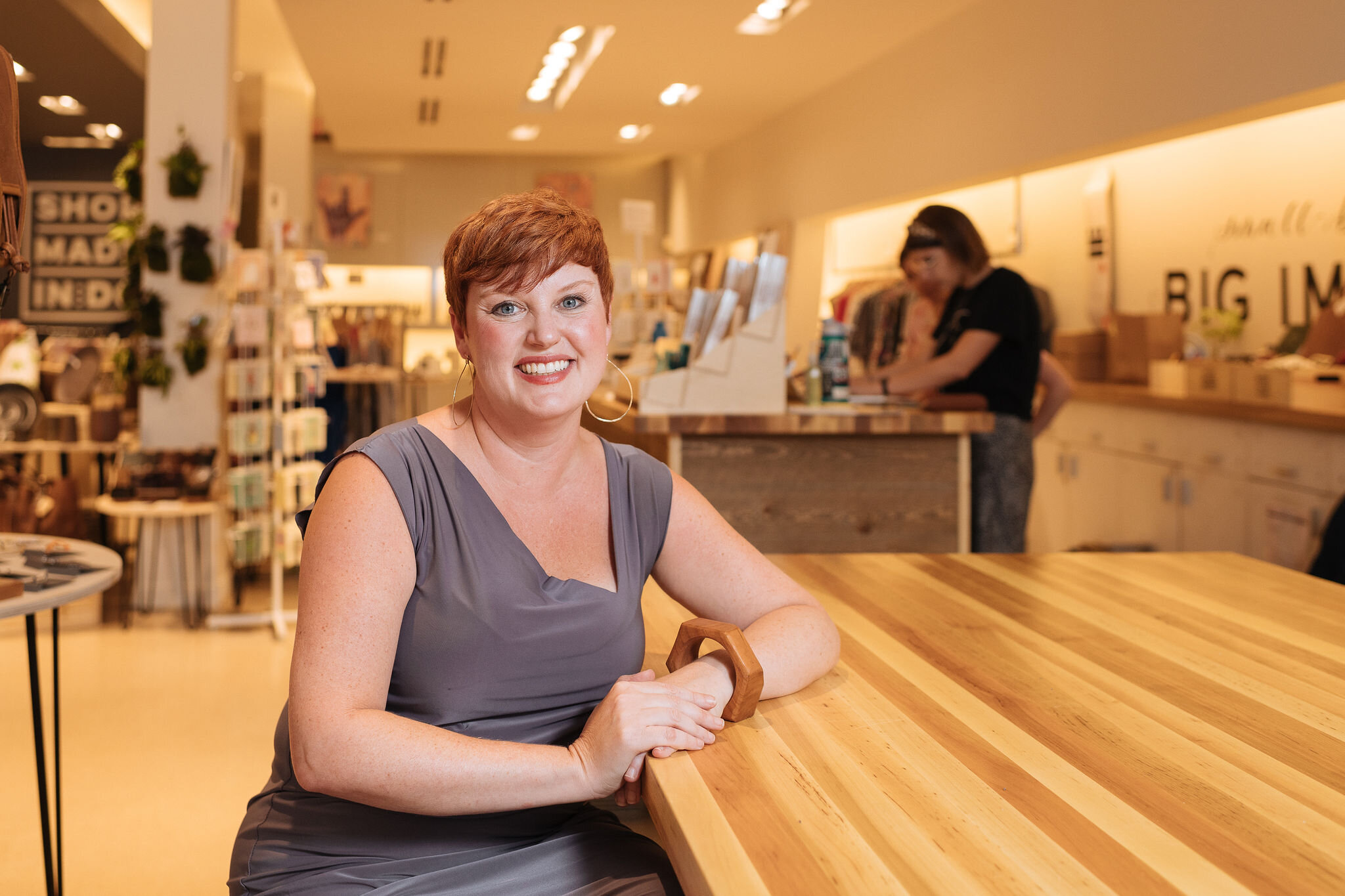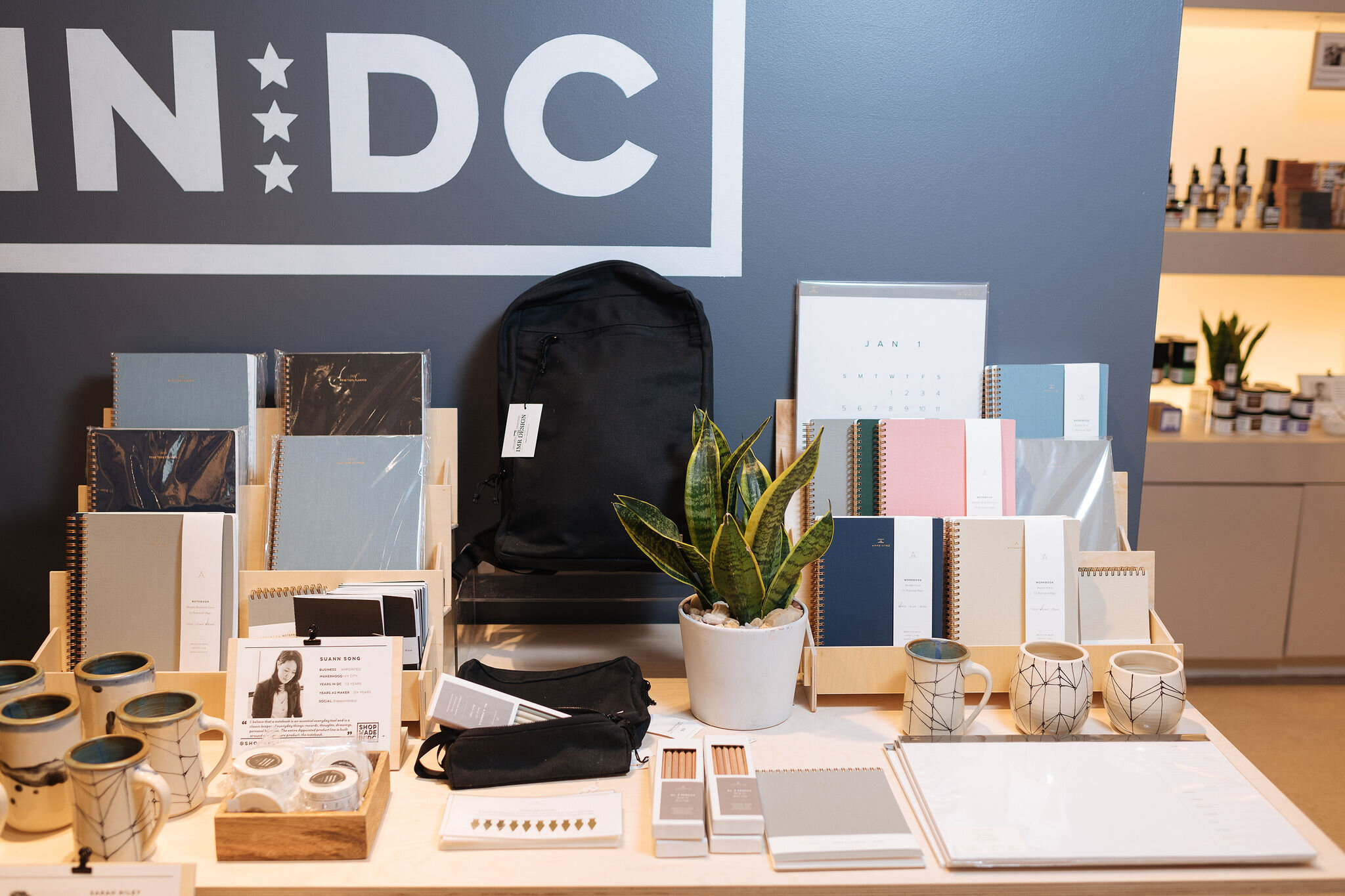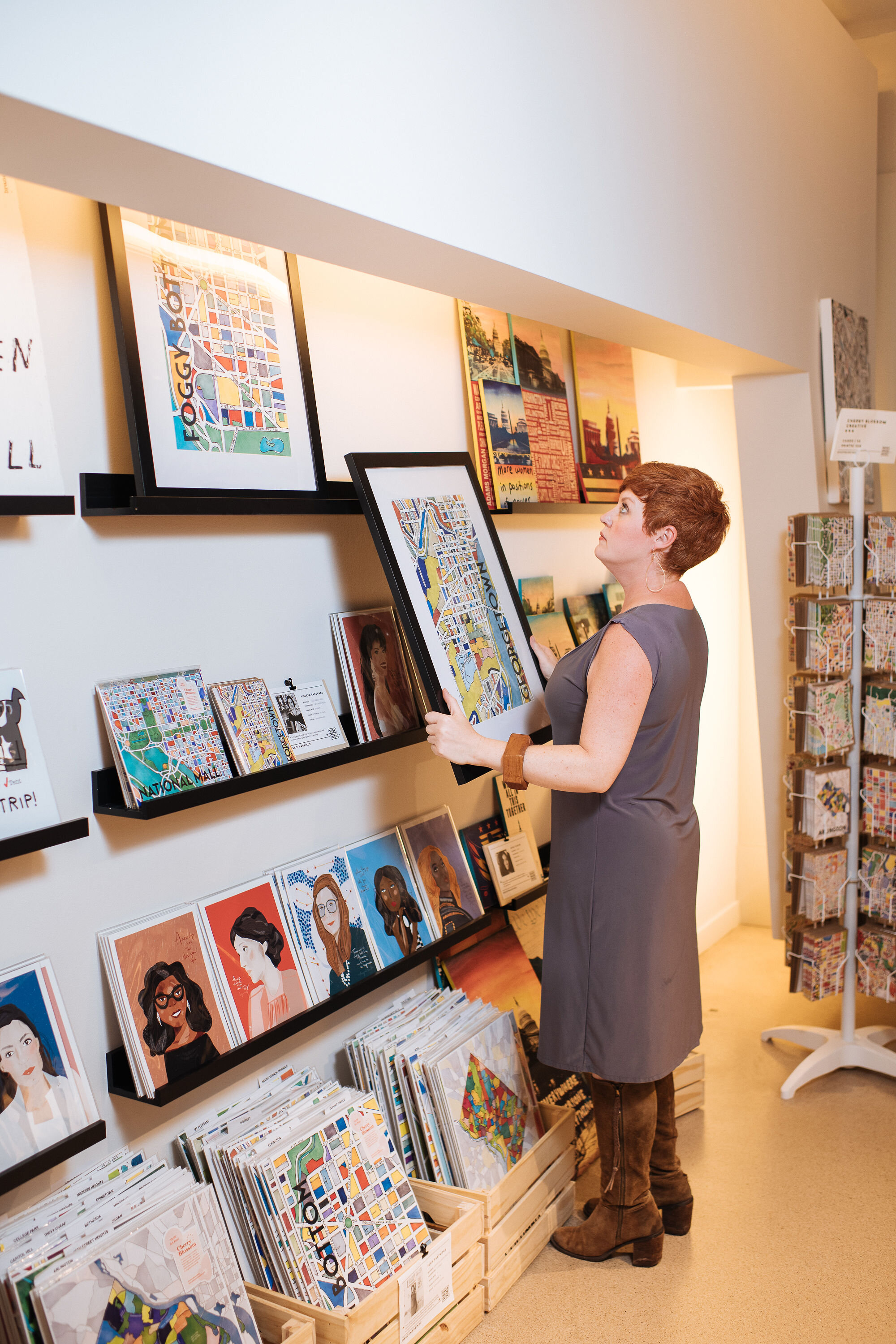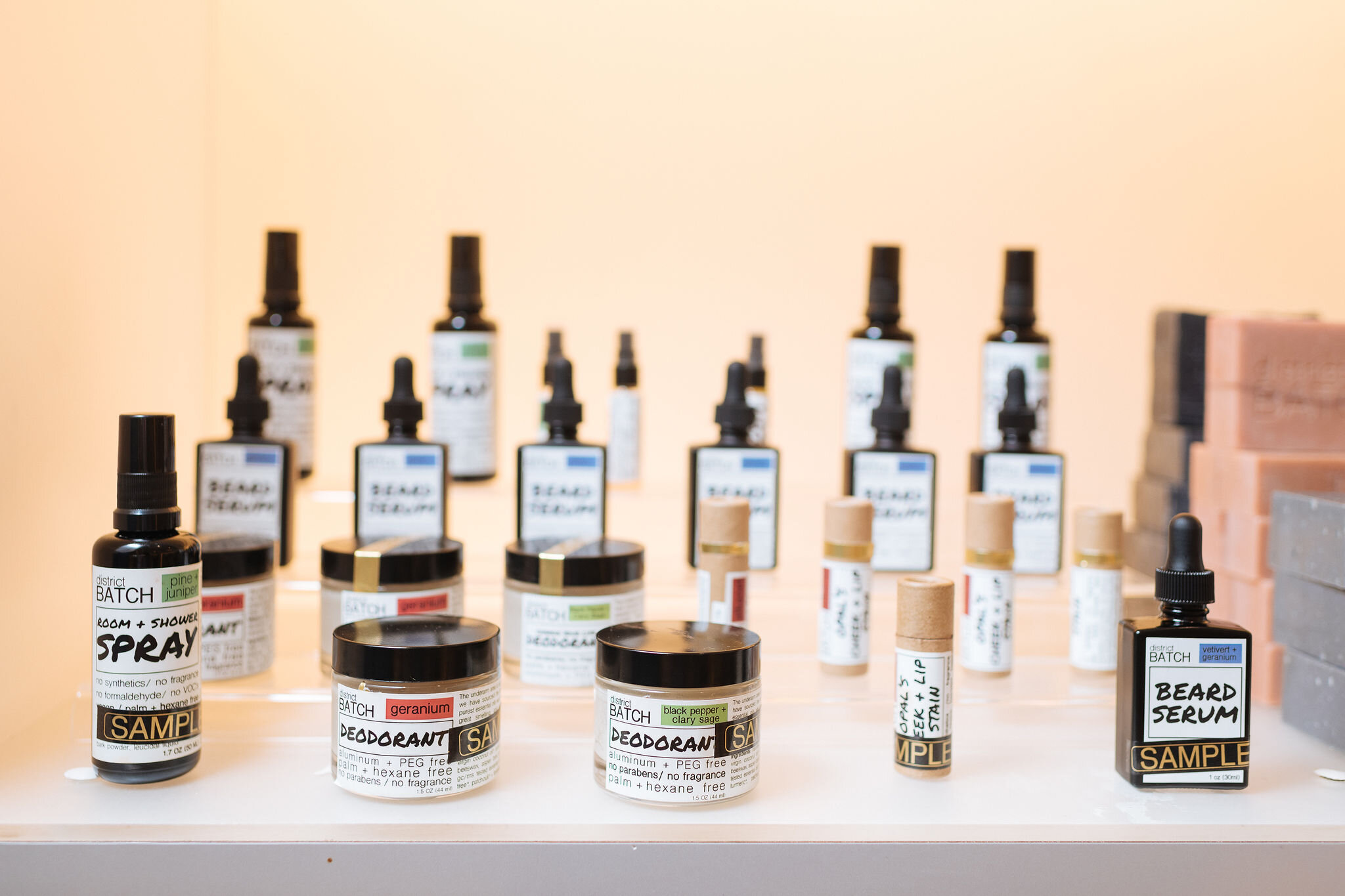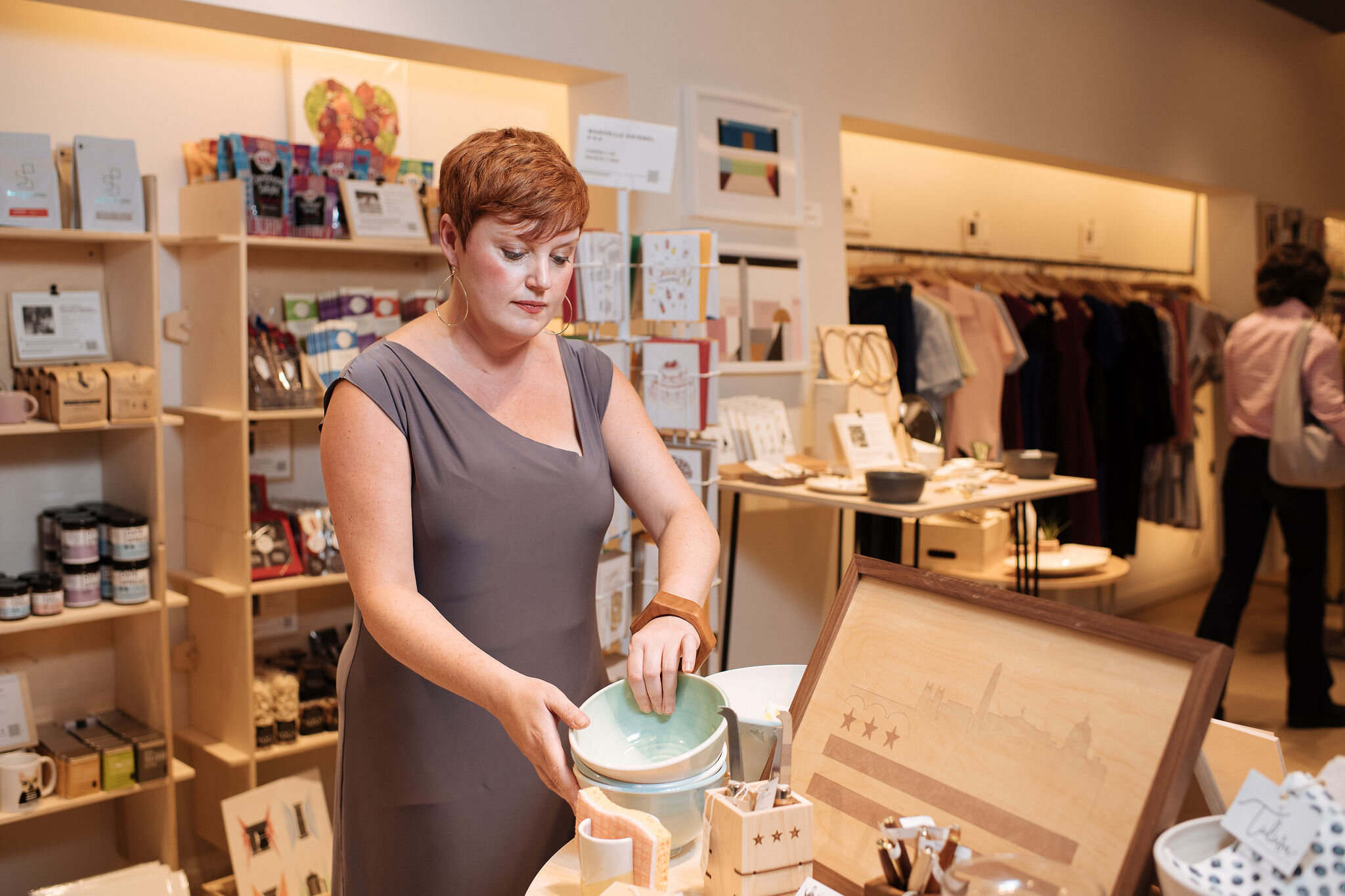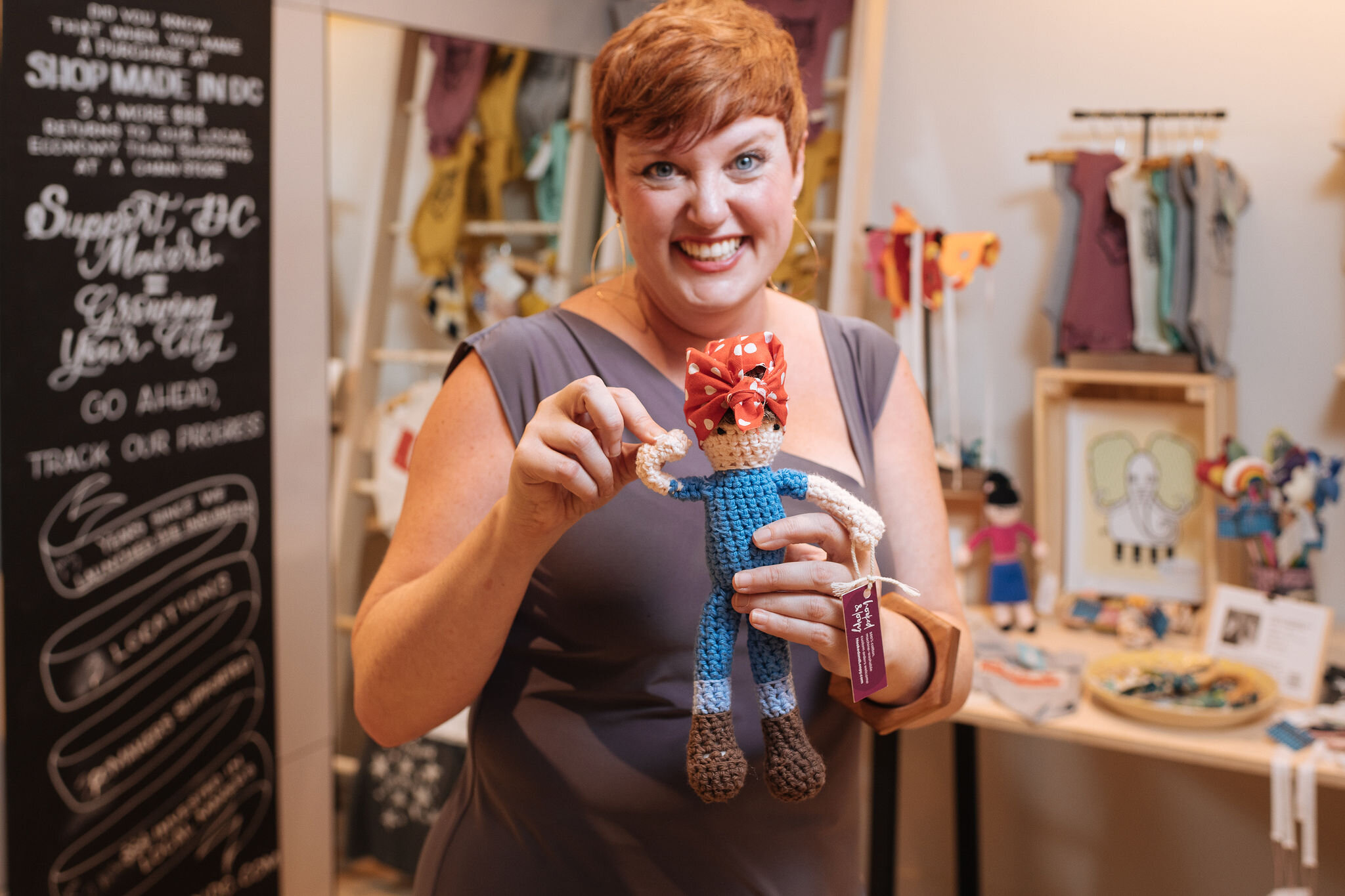‘I Think We Are Changing the Face of Retail’
Stacey Price
Co-Founder and Chief Localist, Shop Made in DC
1242 Wisconsin Ave NW
Stacey Price needs more jam.
Greeting cards, candles, and sassy RBG prints, she’s got. It’s the jam that’s missing at her Shop Made in DC store on Wisconsin Avenue – a retail incubator dedicated to products designed, crafted, built, and made in the District.
‘It sounds so silly, but the two j’s – jewelry and local jam – are what I need more of when it comes to product.’
Stacey has been working with local makers since 2012, ushering in a creative class that always existed in DC, but never had the opportunity to make a living. Shop Made in DC was born out of that void.
‘I’ve been working for the last decade on small business development in DC, and I ran a non-profit for five years. In 2012, Etsy hired me to teach a class called ‘Market Your Localness’ and I met over 200 makers, mostly from the DMV, and I saw this hole in the business sector that I wasn’t helping. I really saw this as a tangible opportunity to help makers. These creative people have always existed – maybe making gifts for friends – but they weren’t necessarily selling products.’
Stacey toyed with the idea of a maker incubation model, but eventually put it to rest. It wasn’t until she walked into a vacant property in Dupont – there on contract to help developers activate the space – that the time suddenly felt right.
‘It was an accidental rebirth of an idea that was a long time in the making. I told the developer I wanted the space, and literally walked out, called my business partner and said, ‘Remember that idea? Are you in?’’
The next day, Stacey met with DC’s Department of Small and Local Business Development (DSLBD) and fast-tracked the project, opening Dupont’s Shop Made in DC just four months later. In 2019, two additional locations opened at The Wharf and in Georgetown.
Growing up in the small manufacturing town of Martinsville, Va., where her parents worked in furniture factories, Stacey was no stranger to the art of making. It was only after her father started a small business while she was in high school that she began to understand the strong partnership between local entrepreneurs and their commercial district was key to a community’s vitality.
That seed bloomed at Radford University, where Stacey spent much of her master’s program working with professors who were invested in social capital and community development. She accepted an economic development job after graduation, and owned her own retail store by 23.
Six years later, Stacey moved to DC.
‘I tell people that my DC is much different than other people’s DC. My DC doesn’t feel transient at all, because I was immediately immersed in the small business community. To me, it does feel like a small town. It’s rare that I walk down the street and don’t know people. I can borrow things from my neighbors. Business owners want to see one another succeed – whether they’re in Martinsville or Georgetown – and they’re rooted in their community.’
Retail has changed tremendously since Stacey arrived in DC a decade ago – the word ‘dying’ frequently tossed around in the media and among fearful small business owners. Shop Made in DC has proven quite the opposite; the model has simply changed.
‘In a very short period of time, we’ve turned an economic development experiment into a very viable business. I think we’re changing the face of retail. We’re proof that the consumer does want to spend money in a real-life setting. They just want to do it differently. I feel like the future of retail is mindful consumption, and experiential. They want to know where the product is from, meet the people who made it and learn how to create it themselves. People are still going to get their necessities in the most convenient way, but when it comes to gift giving and special items, I think they’re looking to stores like us to spend their dollars.’
More than 95 percent of Shop Made in DC’s makers live in DC; the others within a 5-mile radius of the city. Stacey says the business has written more than $2 million back to DC makers since opening, while giving them the opportunity to prove to developers that their concept is credible and commercially successful.
‘We allow makers to create capital with creative projects they’ve either been doing already or thinking of doing. If they eventually want to open their own business, they have those case studies of working with us, without a certain amount of years in business, or that pro forma that a large corporation would have.’
Many Shop Made in DC makers have since left their day jobs to become full-time creators, some even hiring people to help them with production. With a waiting list 500-makers deep, product supply and demand is always changing. There’s no shortage of talent among local potters, for example, but most are unable to produce enough to supply all three store locations. Then there’s the high-quality jewelry and jam – two maker sectors that are saturated in most cities, but still lacking in DC.
DC isn’t known for making one particular thing, but Stacey says her stores have a particular vibe and feel to them.
‘It’s been really important for us to create spaces that feel like one of the nicest gift and home stores you’ve ever been in, with the added bonus that items are being made in your home city. We buy with a design eye and high-quality lens. All of our spaces speak to the quality of goods being made; making sure the product itself is high quality, but also looks high quality on our shelves.’
Surrounded by so many creatives, it’s impossible not to be inspired. Stacey has started taking Shop Made in DC’s in-store classes – from clay earring workshops to floral arranging and terrarium building – and says it’s been fun to make more space in her life for creativity.
‘I’ve dabbled in all kinds of product-making over the years. I’m a creative who has lots of passion without the skills to sell any of those goods, but all of that is in me.’
As Stacey explores Shop Made models in other cities, she says her life’s work seems to always circle back to that inextricable link between small business and community. Georgetown has been the icing on the cake.
‘A piece of my ribbon has begun to tie in a bow, because what I’m doing right now ties together everything I’ve done over the past 20 years. I would come to Georgetown to shop before I lived in DC, and to be here now as a business – there’s a little bit of ‘I made it.’’
